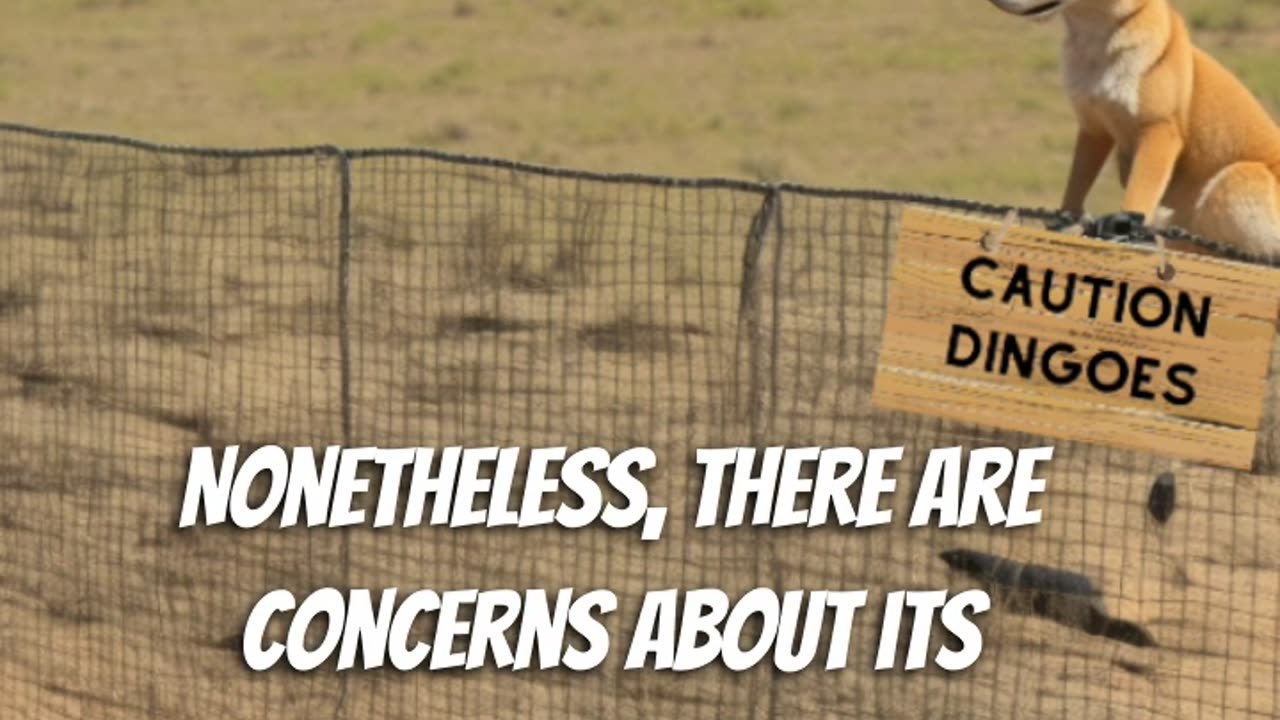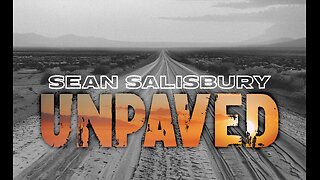Premium Only Content

The Dingo Fence | Interesting History
Hey there! Thank you for watching and supporting my YouTube channel! If you've found my videos entertaining and would like to show your appreciation, you can buy me a coffee. Your contribution, while not necessary, can greatly assist me in creating more useful content. I genuinely appreciate your support!
https://www.buymeacoffee.com/BigJoeVisuals
The Dingo Fence, also known as the Dog Fence, is an iconic and monumental man-made structure that stretches across the vast and rugged landscape of southeastern Australia. Spanning approximately 5,614 kilometers (3,488 miles), it is an impressive engineering feat and holds the distinction of being one of the longest fences in the world.
Construction of the Dingo Fence began in the late 1800s and continued through the early 1900s, in response to the increasing conflicts between wild dingoes and the agricultural industry in southern Australia. Dingoes, which are native wild dogs, were known to prey on livestock such as sheep and cattle, leading to significant losses for farmers and graziers.
The primary purpose of the Dingo Fence was to protect the valuable livestock and minimize the threat posed by wild dogs to the region's agricultural livelihood. To achieve this, the fence acts as a barrier to restrict the movement of dingoes and other predatory animals from the northern areas of Australia into the more populated and agricultural southern regions.
The fence is not a continuous wall but rather a network of fences, barriers, and traps that run through the states of Queensland, New South Wales, and South Australia. It stands approximately 1.8 meters (6 feet) high and is constructed using wire mesh, posts, and other materials to maintain its integrity and longevity. The fence's height may vary in certain sections, depending on the terrain and local requirements.
While the Dingo Fence has been relatively effective in reducing the movement of dingoes into the southern regions, it has not completely eradicated their presence, nor has it entirely prevented their movement southward. Dingoes are known for their agility and resourcefulness, enabling them to find ways to bypass or breach the fence, especially in remote and less-maintained areas.
Critics have raised concerns about the ecological impact of the Dingo Fence. The barrier can disrupt the natural migration and movement of wildlife, potentially affecting the balance of the ecosystem. Some argue that the fence might also lead to genetic isolation among dingo populations, further complicating wildlife management efforts.
Despite its imperfections and controversies, the Dingo Fence holds cultural and historical significance in Australia. It serves as a symbol of the ongoing struggle between humans and the natural environment, highlighting the country's unique approach to managing the coexistence of people, agriculture, and native wildlife in its vast and diverse landscape.
The Dingo Fence stands as a testament to human ingenuity in tackling the challenges posed by wildlife while safeguarding the agricultural industry. It continues to evoke discussions about balancing conservation, ecological concerns, and the needs of the farming community in the ever-changing Australian outback.
Music in the video :
Royalty free -
Cinematic Inspirational Piano by Infraction
[No Copyright Music] / A Way to You
https://www.youtube.com/watch?v=4JQASDpciNM&list=PL7pkSK1xbGD6Jua6GhFN72kClZfobdnCV
-

Sean Unpaved
1 hour agoCFB Deep Dive: Matt Moscona's Expert Takes on the Gridiron
9.88K -
 27:39
27:39
Crypto.com
1 day ago2025 Live AMA with Kris Marszalek, Co-Founder & CEO of Crypto.com
84.8K4 -
 LIVE
LIVE
SternAmerican
22 hours agoElection Integrity Call – Wed, Aug 27 · 2 PM EST | Featuring Arizona
189 watching -
 1:00:05
1:00:05
Timcast
2 hours agoMASS SHOOTING At Catholic Church In Minneapolis, Children Reportedly Targeted
111K70 -
 1:34:01
1:34:01
Tucker Carlson
1 hour agoChristopher Caldwell: Is It Too Late to Save the English-Speaking World?
5.58K20 -
 2:14:40
2:14:40
Steven Crowder
4 hours agoBreaking: Minneapolis Catholic Church Shooting Live Coverage
314K295 -
 LIVE
LIVE
Major League Fishing
5 days agoLIVE! - Fishing Clash Team Series: Challenge Cup - Day 4
294 watching -
 25:03
25:03
Neil McCoy-Ward
1 hour agoFURY As JD Vance Unleashes HELL On The UK & EU… (What We Know So Far)
3.48K6 -
 LIVE
LIVE
IrishBreakdown
1 hour agoNotre Dame vs Miami Preview - Inside the Matchup
7 watching -
 LIVE
LIVE
Rebel News
1 hour agoPoilievre targets Carney on Cdn energy, Smith's AB Next, Ford's crime rant | Buffalo Roundtable
242 watching